HUNGARIAN INVENTORS & SCIENTISTS II
Írta és összeállította / by:
Kerkayné Maczky Emese
Angolra fordította/Translated by:
Felsővályi Klára
Kertész Kinga
Sziráki Dorottya
Rajzolta / Drawings by:
Benkő Andrea Veronika
Kiadta / Published by:
SZENT ISTVÁN MAGYAR ISKOLA
Passaic, New Jersy, 2001
INTRODUCTION
When Nobel Laureate, Enrico Fermi, nuclear physicist, was asked if he believed in extraterrestrials, he replied – „They are already here…they are called Hungarians!” Fermi’s Martians called Hungarians enriched the world with over a hundred thousand inventions, not to mention their countless scientific discoveries. Last year the Szent István Hungarian School published a booklet about a few Hungarian inventors and the list of Nobel Laureates of Hungarian descent as a class project. The booklet was so well received by the public that we decided to publish another one. The researched inventors and scientists included in this booklet do not even represent the tip of the iceberg, but we hope it will be informative and you will enjoy reading about them.
It was a difficult task for our 15 year old students to translate the complicated Hungarian texts into English. To do this, they had to master the Hungarian language, and this booklet proves that they passed the test remarkably well. And 15 year old Hungarians amaze us constantly. Gábor Bernáth, winner of the Philadelphia Science Olympics, invented the ScanGuru at age 15. This 3D scanner is able to copy stereoscopic forms into a computer and can be used in areas ranging from plastic surgery to shoe design. Two 15 year old Hungarian girls (mentioned in this booklet) are among the nine winners out of the 10,000 from 44 countries who participated in the Planetary Society’s competition… and the list goes on.
We are thankful to Andrea Veronika Benkő who did all the portrait drawings as a gift to the Hungarian School.
We are happy to serve our Hungarian Nation with this humble work in making people aware of a few of the many contributions the Hungarian genius gave to the world.
Passaic, May 15, 2001 Emese Kerkay
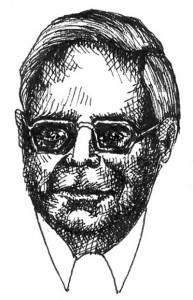
BARÉNYI BÉLA
(1907 – 1997)
Inventions:
VOLKSWAGEN BEETLE
PASSIVE SAFETY OF CARS
SAFE STEERING WHEEL
Béla Barényi, designing engineer, was born in Hirtenberg, Austria, and died in Sindelfingen, Germany. He studied in Hungary and Vienna. From 1939 he worked at Daimler Benz AG. He was the company’s head engineer from 1965 until his retirement in 1972.
In 1925, he designed the famous Volkswagen Beetle. Because Porsche was later credited with the invention (1938), Barényi took legal action. The German Courts and the State Patent Office in Mannheim acknowledged that Barényi had invented the concept and the main components of the Volkswagen. Barényi only asked for 1DM (one German Mark) as compensation.
The passive safety of cars was designed by Barényi as well. Out of his 2500 inventions for the automobile industry, dividing cars into three collision zones was the most significant one (1951). The rigid passenger cell is enclosed by deformable front and rear ends which absorb the impact of collision. In order to mass-produce his design he had to replace the rigid undercarriage with a floor plate, patented in 1943. Since 1959, Daimler Benz (and today every automobile company in the world) manufactures cars – acknowledged for their safety worldwide – based on Barényi’s design. Crash tests are also associated with his name.
Barényi’s inventions completely changed the world’s automobile production. In recognition of his achievements he was admitted to the Automotive Hall of Fame in Detroit, USA. With his ideas he has saved the lives of millions on the roads.
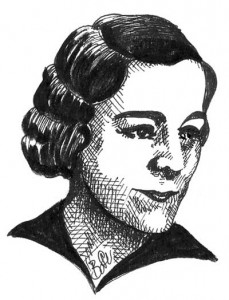
BARNÓTHY FORRÓ MAGDA
(1904 – 1993)
Scientific discoveries:
COSMIC RADIATION
BIOMAGNETISM
Madeleine Forró Barnóthy, astrophysicist and university professor, was born in Zsámbok, Hungary, and died in Chicago, Illinois, USA. She studied in Budapest and Göttingen, Germany. In 1928 she was the first woman to earn a doctorate in physics in Hungary. From 1928 to 1948 she was a physics professor at the Budapest University. In 1948 she settled in the USA with Jenő Barnóthy, her husband and fellow scientist. First she taught physics at the Barat College in Lake Forest, Illinois. In 1955 both Barnóthy’s were asked to lead a company which manufactured radiological research instruments. At the same time (1953–1959) Madeleine Forró Barnóthy was also teaching physics at the University of Illinois.
She specialized in cosmic radiation, astro- and nuclear physics and biomagnetism. She was the author of over 150 scientific papers and editor of the two-volume book Biological Effects of Magnetic Fields (1964). Already in 1964 Dr. Madeleine F. Barnóthy determined that the magnetic field will in due time develop into a powerful new analytic and therapeutic tool of medicine. Her last scientific article concerning astronomy (What is Time?), co-written with husband Jenő Barnóthy, was published in 1991, two years before her death. She was a member of numerous American and international scientific associations.
Forró Barnóthy was a pioneer in the research of the phenomena of cosmic radiation, a prerequisite for conquering the universe.
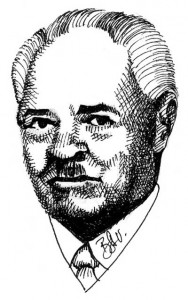
BÉRES JÓZSEF
(1920 – 2006)
Invention:
BÉRES DROPS
Dr. József Béres, agro- and biochemist and cancer researcher was born in Záhony, Hungary. He completed his studies in Gödöllő, Keszthely and Budapest. In 1989 he founded the Béres RT (Corporation) and in 2000 the Béres Pharmaceutical Company. In 1992, he established the Béres Foundation for a Full Life, an organization helping the poor. Annually it distributes over 70 million Forints worth of products (1000 bottles of Béres Drops and other Béres products) to the needy.
József Béres invented the Béres Drops in the early 1970’s. This product is made of minerals, trace elements and organic nutrients, which strengthen the immune system and are essential to good health. His invention saved the lives of thousands of critically ill cancer patients. It eased the pain of those suffering from advanced forms of cancer and even cured malignant tumors. Since he wasn’t a licensed physician he didn’t accept any money for his Drops and soon became bankrupt. The communist government also harassed him, ransacking his laboratory and confiscating his research materials. But, because thousands of sick stood in line to obtain his medicine in Hungary, the government was forced to authorize the continuation of Béres’ research. Today millions take Beres Drops as a preventive medicine. According to Dr. Béres: “The progress and improvement of a sound world is unimaginable without the health of body and soul. We serve this purpose.”
As of January 27, 2000, the Béres Drops is registered as a medicine. Besides the Béres Drops he has many other patented inventions.
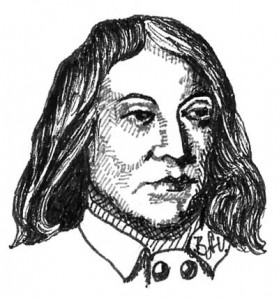
BOLYAI FARKAS
(1775 – 1856)
Scientific discoveries and invention:
DEFINITION OF
BOLYAI ALGORYTHM
HEATING AND COOKING FURNACE
Farkas Bolyai, mathematician, was born in Bolya and died in Marosvásárhely (Transylvania), Hungary. He studied in Nagyenyed, Kolozsvár (Hungary), Jena and Göttingen (Germany). From 1804, he was a teacher at the Marosvásárhely College. He could fluently read, write and speak eight languages. At the age of ten, he was able to find the cube root of 14-digit numbers mentally. Besides being a mathematician, he was interested in painting, music, drama, poetry, literature, astronomy, forestry…
Because of his isolated life, the scientific world did not take notice of his numerous mathematical discoveries. In his most well-known book TENTAMEN (1832) written in Latin, he published these independent discoveries. Yet his discoveries were attributed to others, who published these new theories years later.
Bolyai’s best known theorem defines two areas of the plane equal, if they can be partioned into a finite number of paired congruent sections. The so-called Bolyai-algorithm calculates the asymptotic solution of the equation xm=a+x with a series of roots.
One of Bolyai’s important inventions was the heating and cooking (baking) furnace, famous in Transylvania. It was extremely efficient in the heating and ventillation of rooms and even utilized the heat of waste gases.
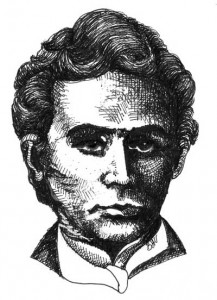
BOLYAI JÁNOS
(1802 – 1860)
Scientific discoveries:
ABSOLUTE GEOMETRY
THEORY OF RELATIVITY
János Bolyai, military engineer, philosopher and the most ingeneous mathematician of all time, was born in Kolozsvár, and died in Marosvásárhely, Transylvania. He began his education under the tutorage of his father Farkas Bolyai, and studied in Marosvásárhely, Kolozsvár and at the Military Academy of Engineering in Vienna. He spoke nine languages, Chinese and Tibetan included. Bolyai was the Austro-Hungarian royal and imperial army’s primary mathematician, violin virtuoso, fencer and dancer.
In 1823 Bolyai already informed his father in a letter about his Theory of Absolute Space: Out of nothing I have created a whole new world. He rejected Euclid’s parallel postulate. Bolyai’s discoveries introduced a new age in the history of geometry. He had solved a 2000 year old problem! His world-famous discovery was published as “Appendix” in his father’s book, Tentamen… Albert Einstein must have studied Bolyai’s discoveries before developing his theory of relativity in 1905. Bolyai writes regarding the relationship between the gravitational force field and geometrical space: The theory of gravitational space is also in close connection and continuation with the size, being and quality of space. Tibor Toro, physics professor wrote a 1000 word thesis on this statement proving that Bolyai had determined, before Einstein, the basis of the theory of relativity.
The recent study of the over 20,000 pages of his unpublished manuscripts kept in the Teleki Téka in Marosvásárhely (Transylvania) discloses Bolyai’s true genius.
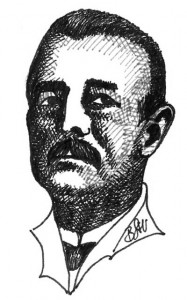
FEJES JENŐ
(1877 – 1952)
Inventions:
PLATED ENGINES AND AUTOMOBILES
Jenő Fejes, automobile and motor designer, was born and died in Budapest. He completed his studies at the Technical School. He was the designing engineer of Westinghouse, France, from 1902–1909. From 1909 he lived and worked in Hungary. Fejes was instrumental in the development of the Hungarian automobile and airplane industry. He was the director of the Fejes Platemotor and Machine Factory.
His well-known invention is the Fejes plate-engine and automobile. The main characteristic of this invention was that all the heavy iron, steel and aluminum castings were replaced with cold-formed, pressed and torch- or spot-welded iron and steel plates. This technique was also used on the engine-house, steering gear, rear axel and the motor block. The dead weight of vehicles designed by Fejes was 30% to 35% lighter, and they were 20% less expensive. The operational safety of the motors was also increased, because in case of impact it was only dented rather than broken.
In 1927, Fejes founded The Fejes Patents Syndicate Ltd and the Ascot Motor and Manufacturing Co. Ltd. in England. However massproduction was prevented by the Austin factory, which controlled England’s car manufacturing industry. It viewed Fejes’ factory as a threat and was afraid that the success of the low-cost cars would harm Austin.
Fejes’ inventions were ahead of their time. They were put into practice, mainly in the USA, only from the 1970’s.
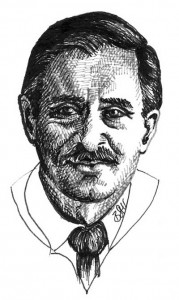
GERGELY PÉTER
(1936 – 1995)
Scientific discoveries:
DEVELOPMENT AND USE OF
REINFORCED CONCRETE
CONSTRUCTION SAFETY IN
EARTHQUAKE ZONES
Péter Gergely, architect and structural engineer, was born in Budapest and died in Ithaca, New York. He completed his studies in Hungary, Canada and the United States and received his Ph.D. degree in 1963. For 32 years he was a professor at Cornell University. From 1983–88 he was chair of the Department of Structural Engineering and from 1985–88 director of the School of Civil and Environmental Engineering. He fought as a University National Guard in the Hungarian Freedom Fight of 1956 and escaped to the US from the Soviet invasion.
Gergely’s research and discoveries, published in over 100 scientific papers, led to significant advancements in understanding the mechanics of reinforced and pre-stressed concrete and its application to building codes. He also made pioneering contributions in structural dynamics and earthquake engineering. His discoveries provided answers to many previous problems that occured in areas of moderate seismicity. His improved building codes for structures, especially nuclear plants in earthquake zones are used on a national level. Much of his discoveries were realized through the National Center for Earthquake Engineering which he helped found. He volunteered in many scientific associations and received six international awards.
In 1992, Gergely, a dedicated Hungarian, received an honorary doctorate from the Technical University of Budapest for his international activities in the advancement of the construction industry and improvement of reinforced concrete.
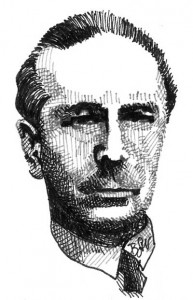
JENDRASSIK GYÖRGY
(1898 – 1954)
Inventions:
GANZ–JENDRASSIK ENGINE
GAS TURBINE
György Jendrassik, mechanical engineer and inventor, was born in Budapest, Hungary and died in London, England. He completed his studies in Hungary and Germany and worked in the research department of the Ganz-Danubius Machine Factory.
Jendrassik patented the Ganz-Jendrassik engine in 1927. This was a high-speed, four-cycle Diesel-engine, without compression and with a mixing chamber. In his designs, Jendrassik took into full account the requirements of railway haulage: the engine should work with an appropriate torque at every speed. In railway operation the engine has to start immediately, even in cold weather. With his invention, Hungary began to use Diesel power in the railway system and the Danube-ocean shipping. His engine received a world patent and was manufactured in several countries.
Jendrassik built the world’s first usable, efficient, 100 horse powered gas turbine with its own furnace chamber. New about his invention was the method in which the various important elements, such as the compressor, the turbine and the heat exchanger were designed. The correct operation of these elements ensured higher efficiency. The periodical, Engineering (London), claimed that the Jendrassik turbine was the first of its kind to run consistently and satisfactorily.
Jendrassik’s merit was that he recognized the future of gas turbines in aviation, without which military or long-distance aviation is unimaginable. Jendrassik had nearly 100 accepted patents in Hungary and Great Britain.
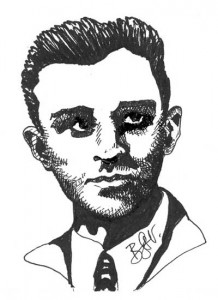
KABAY JÁNOS
(1896 – 1936)
Invention:
EXTRACTION OF MORPHINE
DIRECTLY FROM POPPY PLANTS
János Kabay, pharmaceutical chemist and inventor, was born in Büdszentmihály, Hungary and died in Budapest. He obtained his diploma at the University of Budapest in 1923.
Kabay researched the extraction of poppy alkaloids directly from the plant. Until then morphine was produced from opium. Kabay was the first in the world to succeed in producing morphine directly from the immature poppy plant. In 1925, he applied for a patent under the title Procedure for the production of opium alkaloids from immature poppy plants. Based on this patent, he founded the Alkaloida Chemical Plant in Büdszentmihály (today Tiszavasvári, Hungary) in 1927. He struggled with financial problems to maintain his plant for years. Despite these difficulties he continued his research and in 1932 he was able to extract morphine from dry trashed poppy straw using a new procedure. By this time the government acknowledged the significance of Kabay’s discoveries and provided financial support for his research of morphine production. Soon his plant satisfied the needs of the country and even manufactured morphine for export.
In 1934 he was invited by the Drug Control Committee of the League of Nations to Geneva to introduce his methods. Today, these methods are used throughout the world.
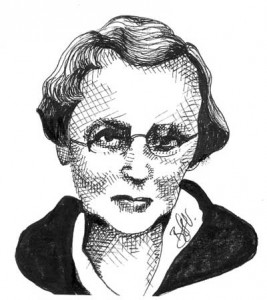
KELP ILONA
(1897 – 1970)
HUNGARIAN MORPHINE PRODUCTION
Ilona Kelp, chemist, was born in Hungary and died in Australia. She received her Ph.D. at the University of Budapest in 1923. SHer knowledge of chemistry was so outstanding that she was allowed to go to Géza Zemplén’s department at the Technical University of Budapest, where female students were accepted only in extraordinary cases.
After completing her studies, she married János Kabay. Together they founded the Alkaloida Chemical Plant in Büdszentmihály (now Tiszavasvári). Ilona Kelp was Kabay’s equal in solving scientific and practical problems. After János Kabay’s death in 1936, she became the plant’s professional director. Consequently the League of Nations asked her to prepare the scientific description titled Classification of Morphine in Poppy-Straw Using János Kabay’s Method.
In 1997, for the 100th anniversary of her birth, Ilona Kelp’s portrait was placed in the Portrait Gallery of Famous Chemists. This is a permanent exhibition of Hungary’s Museum of Chemistry which displays the portraits of the most prominent chemists. Ilona Kelp is the first female chemist to be awarded a place in the Portrait Gallery.
Along with Kabay it is her merit that Hungarian morphine production came to be and that the Alkaloida Vegyészeti Gyár Rt (Chemistry Plant) was established.
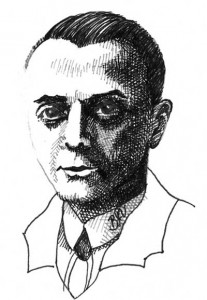
MIHÁLY DÉNES
(1894 – 1953)
Inventions:
SOUND MOTION PICTURE
TELEBROADCASTING
Dénes Mihály was born in Gödöllő and died in Berlin (Germany). He earned his diploma in mechanical engineering at the Technical University of Budapest. At age 16 he wrote a book about automobiles (and motorcycles) which went through 8 editions.
During his studies at the university he experimented with the concept of sound motion picture and telebroadcasting. In 1916 he completed successful experiments in this field, and is therefore regarded the inventor of sound motion picture. One of his most significant inventions in connection with the sound motion picture was the Projectophon, patented in 1918.
Another one of Mihály’s inventions, the Telehor (picture-telegraph), was able to transmit still pictures over distances of many kilometers. Since he wasn’t able to perfect his inventions in Hungary, he accepted the invitation of the Allgemeine Elektrizitäts Gesellschaft in Berlin, where he could research under favorable conditions.
In 1928, at the Berlin Radio Show he presented the Nipkow-dial he had modified and applied semi-incandescent lamps as a light relay. On March 8, 1929, the Berlin-Witzleben radiostation broadcasted the first moving television program in history, based on Mihály’s patent. Mihály founded a company called TELEHOR AG to manufacture television sets. In 1935, he developed with physicist E.H. Traub the Mihály – Traub receiver with a revolving mirror.
Under Hitler’s rule he was sent to a concentration camp for hiding the persecuted. In 1953, he died from tuberculosis he acquired there.
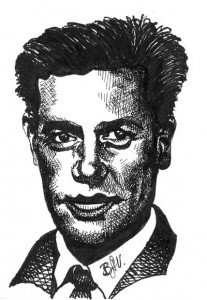
NÉMETHY GYÖRGY
(1934 – 1994)
Scientific discoveries:
EFFECT OF WATER ON PROTEIN STRUCTURE
CONCEPT OF ALLOSTERIC EFFECTS
ON ENZYMES
György Némethy, bio- and physical chemist, was born in Budapest and died in New York. He completed his studies in Hungary, Germany and the United States, earning a Ph.D. at Cornell University in 1962. He served both science and the youthmovement throughout his life.
His main field of research was the interaction of water and proteins. For his achievements in the study of Molecular interactions in Hydrogen-Bonding Solvents, in 1972 he received the Pius XI Gold Medal of the Pontifical Academy of Sciences in recognition of his great merits as a scientist. Némethy helped develope the ECEPP computer program, which is used for determining the configuration of protein molecules. He acquired remarkable results in the field of calculating the atomic structure of collagens – the characteristic proteins of connective an supportive tissues. He introduced the concept of the allosteric effect.
Némethy wrote close to 300 scientific articles, and is one of the most quoted authors in the field of biochemistry. He wrote, taught, lectured and researched in five languages in numerous universities in Europe and the US. From 1988 he was professor of Biomathematical Sciences at the Mount Sinai School of Medicine. Since 1994 the department has hosted the annual Némethy Memorial Symposium titled „Advances in Protein Folding”. It also offers a Némethy scholarship to candidates who work in his field.
Némethy also devoted his life to the youth movement, passing on his love for nature, Hungarian language, culture and art. For 20 years he was president of the Hungarian Scout Association.
OKOLICSÁNYI FERENC
(1897 – 1954)
Inventions:
CONVEX MIRROR SCANNING SYSTEM
COLOR CATHODE RAY TUBE
ELECTRONIC SEED-SORTING DEVICE
Ferenc Okolicsányi, physicist and inventor, was born in Budapest, Hungary and died in London, England. He studied at the Technical University of Budapest and earned his Ph.D. in physics in Erlangen, Germany.
Because of the dire conditions in Hungary after World War I, Okolicsányi could not realize many of his significant inventions in practice. In 1926, he conducted research in Berlin, and worked in the field of television with Dénes Mihály. From 1936, he worked in London. He developed the convex mirror scanning system, and was able to produce high quality pictures on television using an ultrasonically generated liquid grid system. This system was used to project large pictures at the British Radio Show in 1938.
After World War II, he worked on color television. His colored cathode ray tube, patented in the USA, was mass-produced. It preceded the Lorentz-tube.
Until his death, he was the chief engineer of a company in London which produced and sold his successful electronic seed-sorting device throughout the world.
Okolicsányi was a significant pioneer of television.
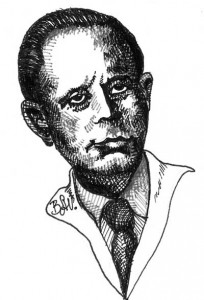
SELYE JÁNOS
(1907 – 1982)
Scientific discoveries:
CONCEPT OF STRESS
EFFECTS OF STRESS
Hans (János) Selye, physician, biochemist and physiologist, was born in Vienna, Austria and died in Montreal, Canada. He studied in Komárom (Hungary), Paris, Rome and Prague, where he received his Ph.D. He came to America on a scholarship in 1931. From 1941 to 1945, he held a professorship at McGill French University in Montreal, Canada. From 1945 he was director-professor of his own school, the Institut de Medicine et de Chirurgie Expérimentale. He lectured in ten languages, and received honorary doctorates from universities of nine countries. 110 academies invited him to be a member.
Based on his research, Selye recognized and in 1936 defined the concept of stress. He named the many depressing factors stress-series, realizing their harmful effects and their potential to cause disease. This revolutionary concept opened up entirely new methods to cure illnesses such as coronary trombosis, brain hemorrage, hardening of arteries, certain types of blood pressure, kidney failure, arthritis, peptic ulcers and, to a certain degree, even cancer. He summarized the result of his many years’ research in a dissertation titled The Physiology and Pathology of Exposure to Stress. From his observations, he derived his concept of a common reaction mechanism in response to the most varied type of injury and called this the general adaptation syndrome.
Selye, the father of stress theory, published dozens of books and hundreds of scientific papers in 10 languages. He helped develop the computer system based medical data banks.
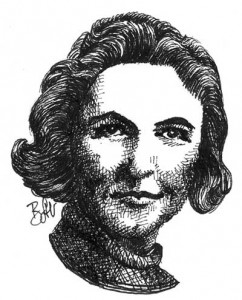
TELKES MÁRIA
(1900 – 1995)
Inventions:
UTILIZATION OF SOLAR ENERGY
HEATING OF BUILDINGS BY SOLAR ENERGY
WATER DESALINIZATION BY
SOLAR ENERGY
Mária Telkes, scientist, inventor and professor, was born and died in Budapest, Hungary. She completed her studies in Hungary and obtained her Ph.D. in physical chemistry at the University of Budapest. In 1924, she traveled with her uncle, the Hungarian Consul, to Cleveland, Ohio.
In Professor Dr. George W. Cryle’s biophysical laboratory in Cleveland, she demonstrated that the prepared surface of the brain gives off infrared rays. To measure this, she developed an extremely sensitive detector and an infrared camera. From 1939, as a professor at the Massachusetts Institute of Technology, she researched the utilization of solar power. Based on her design, the first house heated with solar energy was built in 1948. By building several more sun houses, Telkes called attention to the study of solar energy. From 1950 she was the Institute’s director of research. Her important, patented method for the desalinization of salt water utilizing solar power was used in the tropics. The heat storage equipment designed by Telkes is able to store heat energy for an extended amount of time. Telkes discovered how to store cold as well, using the principles of heat storage. A patent, received at age 90, dealt with new possibilities for the storage of cold.
Telkes obtained over 20 patents, and had written over 100 scientific articles. She received 12 international awards.
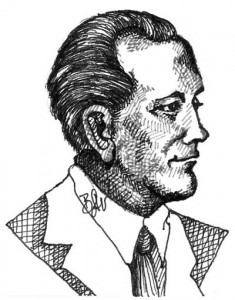
TIHANYI KÁLMÁN
(1897 – 1947)
Inventions:
ICONOSCOPE
TORPEDO
Kálmán Tihanyi, physicist and inventor, was born in Üzbég, Hungary and died in Budapest. He studied in Pozsony and Budapest.
Tihanyi patented the iconoscope used for television first in 1926, then in 1928. The predecessor of the modern picture tube, the iconoscope is a high efficiency charge storing electrode. In his 1929 English and French patents, he applied the lengthening tube with the electrode. This made possible the scanning on the picture side, which is the basic requirement for the modern iconoscope.
For a long time, his invention’s precedence was not acknowledged, even though the American Patent Office refused Zworykin both in 1930 and 1931, aluding to the precedence of Tihanyi’s invention; Tihanyi had received two American patents in 1928. People are now starting to acknowledge that this significant discovery was invented by a Hungarian.
From 1929, Tihanyi worked on a television guided arial defense system. He developed the prototype of the torpedo for the British Royal Airforce and the Italian navy.
In 1940 he completed his prototype of the ultrasound radiating device, developed a few years earlier. This device had a range of 5-8 km and was used for the extermination of harmful insects.
He also had numerous other inventions.
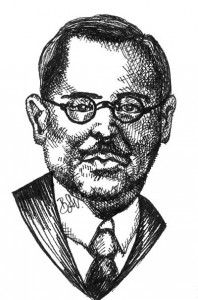
ZEMPLÉN GÉZA
(1883 – 1956)
Scientific discoveries:
ZEMPLÉN SAPONIFICATION
ZEMPLÉN SUGAR DECOMPOSITION
Géza Zemplén, chemist, was born in Trencsén and died in Budapest. He completed his studies in Hungary, earning a Ph.D. at the Budapest University of Sciences in 1904. For two years he researched the chemistry of enzymes in Berlin on a scholarship. In 1913 he was asked to organize and chair Hungary’s first Organic Chemistry Department at the Technical University. He played a vital role in the establishment of the organic chemical industry of Hungary.
His major accomplishments include the developement of a method for the saponification of acetylized carbohydrates whith sodium metylate, the new method for the Zemplén sugar decomposition, and the determination of the structure and synthesis of several glycosides using the mercury acetate technique. He began dealing with industrial problems During World War I, when he became advisor in chemistry for Chinoin, the major chemical plant of Hungary.
His more than 200 scientific articles deal mainly with the chemistry of carbohydrates. His book, Enzymes and their Practical Application, published in 1915, shows his advanced biochemical insight. Shortly before his death he wrote another book, Organic Chemistry.
O.Th. Schmidt’s portrait of Zemplén was: If we consider the entire field of his research efforts, the picture of a mastermind of experimentation, a sharp-eyed, energic and comprehensive chemist, and a man of indefatigable will power emerges …Zemplén always emphasized pure sugar chemistry. It is this that represents his importance in research, this is where he developed these methods, which made him famous.
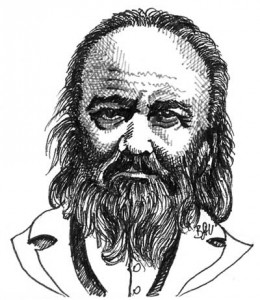
ZSOLNAY VILMOS
(1828 – 1900)
Inventions:
PORCELAIN FAIENCE
PYROGRANITE
EOSIN
Vilmos Zsolnay, ceramic artist, industrialist, was born and died in Pécs, Hungary. He studied painting in Vienna and in 1853 he took over the company his father Miklós Zs. had founded. He studied chemistry and technology on his own. With his innovations he became the pioneer of modern ceramics.
Zsolnay developed the family industry into a many-faceted ceramic factory. He regularly examined and experimented with the clays of the region. He brought the decorating of ceramics to an artistic level. At the Paris World Exhibition of 1878, he introduced his newly developed decorative porcelain faience, which was completely different from other known clay products. He used a lead-free glaze on ivory colored pottery. In the process of decorating, the colored glaze melted slightly into the base glaze at the third firing. With this technique, Zsolnay, the artist, was able ot make the finest decoration; many of his creations were like oilpaintings.
Zsolnay invented a new building-ceramic, the carvable, frostproof pyrogranite, which decorates many of Hungary’s famous buildings (Mátyás Church, Parliament, Museum of Applied Arts, St. Erzsébet Dom of Kassa, Castle of Vajdahunyad).
The Ceramic Factory in Pécs is also famous for its iridescent metallic Eosin maze, which Zsolnay codeveloped with Vince Wartha, a professor at the Technical University. At the time of Zsolnay’s death in 1900, his family factory was successful in all fields of manufacture.
